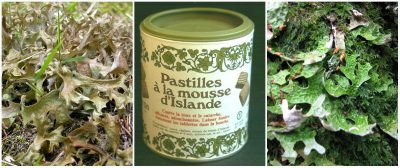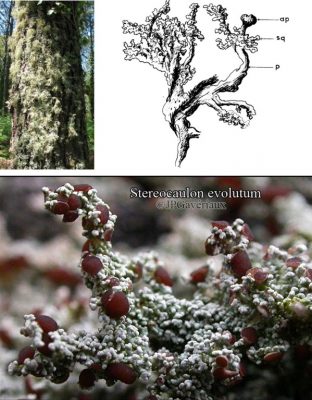Lichens and therapeutic applications
PDFLichens have been used as medicines since ancient times. It should be recalled that from the 16th century, man has sought in possible remedies a certain identity with a diseased organ or symptoms of disease (the so-called signature theory, [1]). In the case of lichens, it was thought that Usnea could grow hair and cure neurological diseases, that Xanthoria parietina, with her yellow colour, cured yellows. Peltigera canina was recommended to cure rabies, a disease transmitted by the bites of rabid dogs.


At present, the various properties of lichen metabolites and their applications are the subject of much work worldwide. Researchers specializing in pharmacognosy have demonstrated the photoprotective properties of lichens through the presence of mycosporins for anti-cancer purposes to fight melanomas. [4] Five new compounds extracted from lichen Parmotrema tsavoense have shown cytotoxic activities on cell lines of hepatocellular liver carcinoma, lung cancer and breast cancer. [5] These scientists also showed that atranorin, an important metabolite of Stereocaulon evolutum, and some analogues, interfere with both the entry of hepatitis C virus into human cells and the replication of the virus [6]. Even if the mechanisms of action of these antiviral substances have yet to be elucidated, this opens the way to the discovery of new treatments from a cheap natural resource [7] (Figure 2).
Notes and references
[1] Signature theory is a way of understanding the world in which the appearance of creatures, mainly plants, is supposed to reveal their use and function. It applies mainly to medicinal plants, by virtue of their therapeutic powers (Paracelsus formulates the principle similia similibus curantur ” let like cured by the like “). Developed in the medieval West and during the Renaissance, this theory disappeared from the learned world in the 18th century.
[2] Cetraria islandica is on the official list of medicinal plants listed in the pharmacopoeia and authorised for sale by pharmacists (Decree of August 22, 2008, France).
[3] Cocchietto, M., Skert, N. & Nimis, P.L. 2002- A review on usnic acid, an interesting natural compound. Die Naturwissenschaften, 89, 137-146.
[4] Roullier, C., Chollet-Krugler, M., Pferschy-Wenzig, E.M., Maillard, A., Rechberger, G.N., Legouin-Gargadennec, B., Bauer, R. & Boustie, J. 2011 – Characterization and identification of mycosporins-like compounds in cyanolichens. Isolation of mycosporin hydroxyglutamicol from Nephroma laevigatum Ach. Phytochemistry, 72, 1348-1357.
[5] Duong, T.H., Chavasiri, W., Boustié, J. & Nguyen, N. 2015 – New meta-depsidones and diphenyl ethers from the lichen Parmotrema tsavoense (Krog & Swinscow), Parmeliaceae. Tetrahedron, 71, 52, 9684-9691.
[6] Vu, T.H., Le Lamer, A-C. Lalli, C. Boustie, J., Samson, M., Lohézic-Le Dévéhat, F. & Le Seyec, J. 2015 – Depsides, lichen metabolites active against Hepatitis C virus, PLoS One, 10(3), 1-14.
[7] Several species of lichens (various Parmelia, Evernia prunastri) can cause contact allergies with hand eczema formation due to the erannic acids, fumarprotocetraric acids etc. they contain. Others, such as Letharia vulpina, a species very rich in soralia, can cause sneezing and sometimes even nosebleeds.




